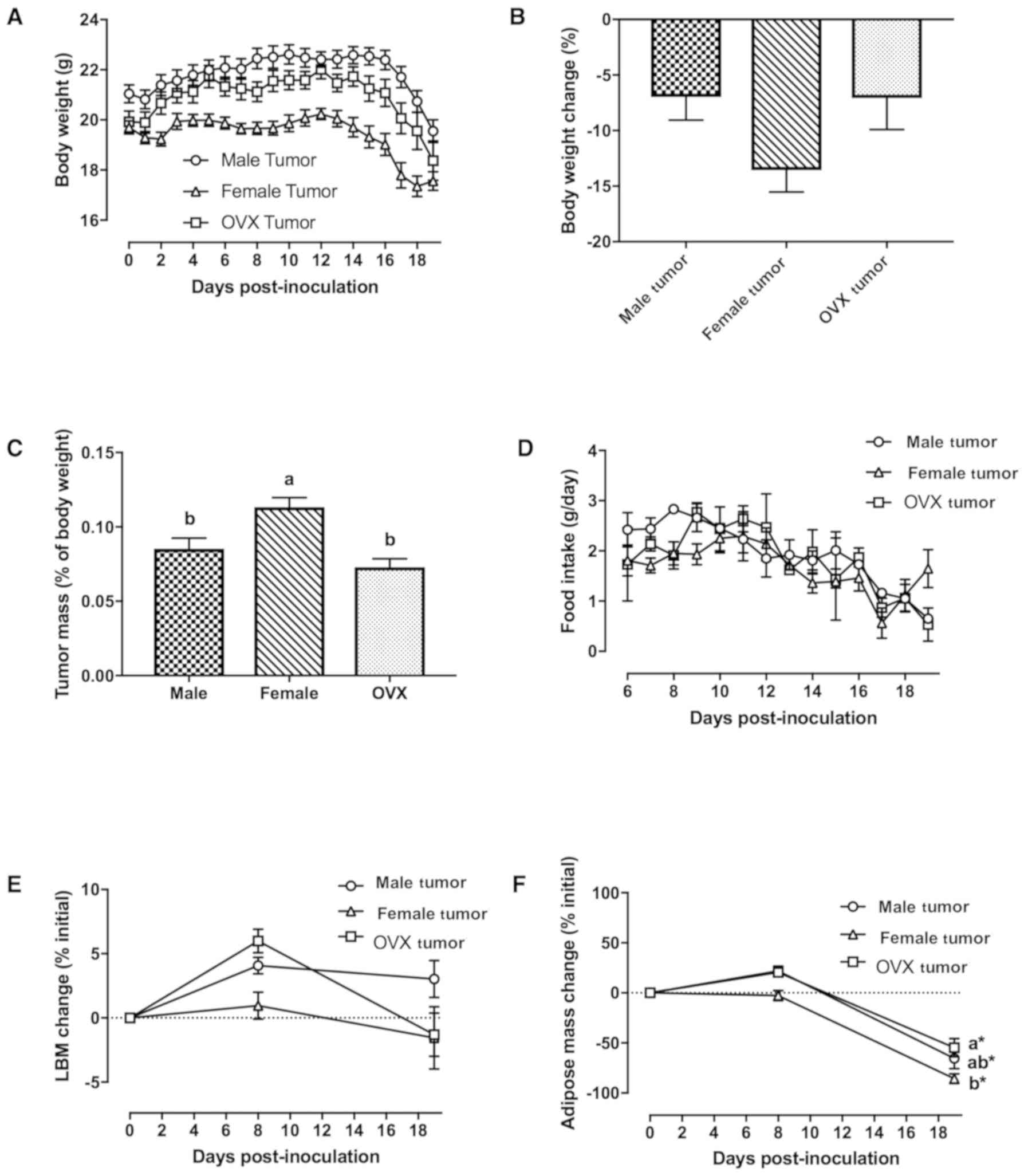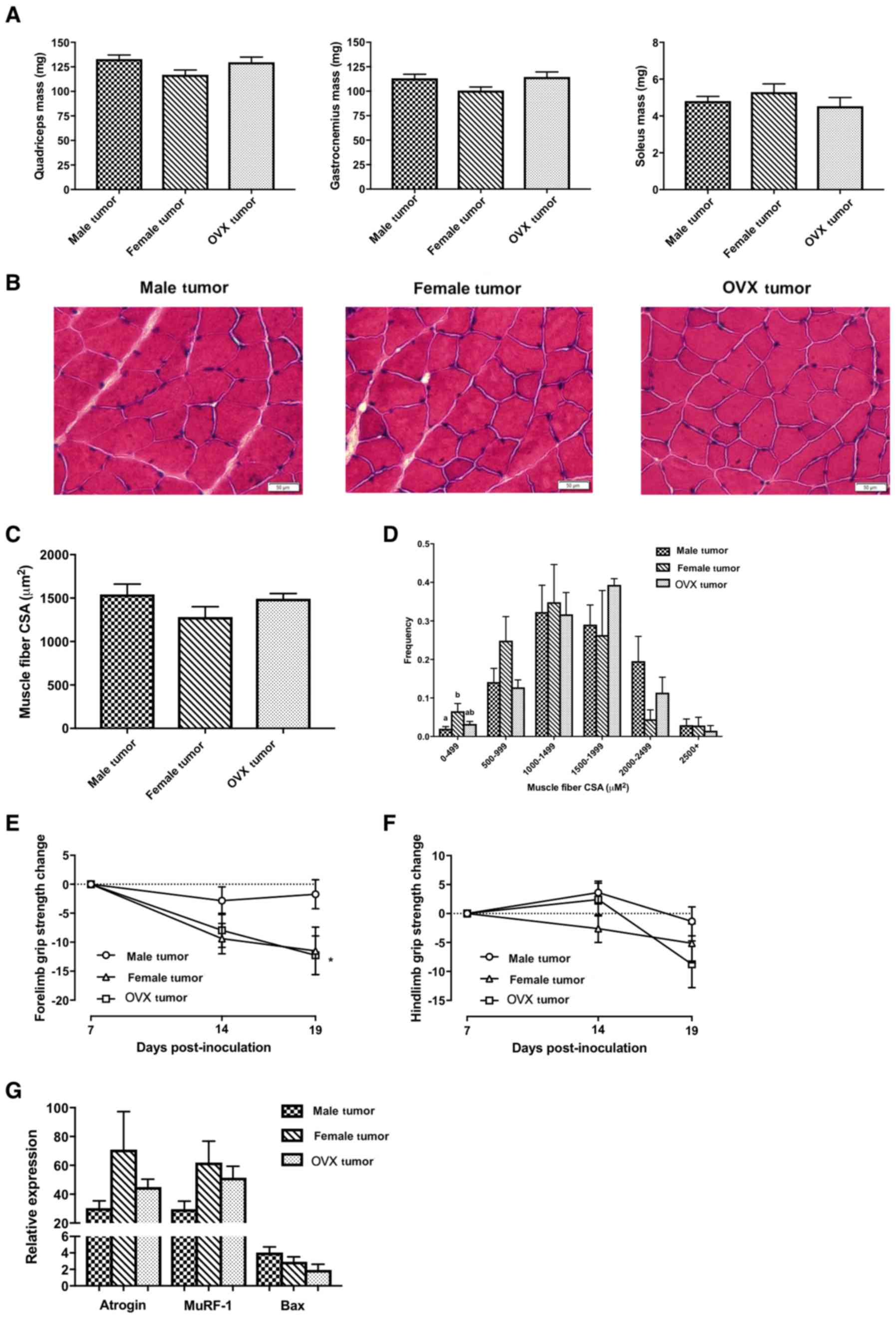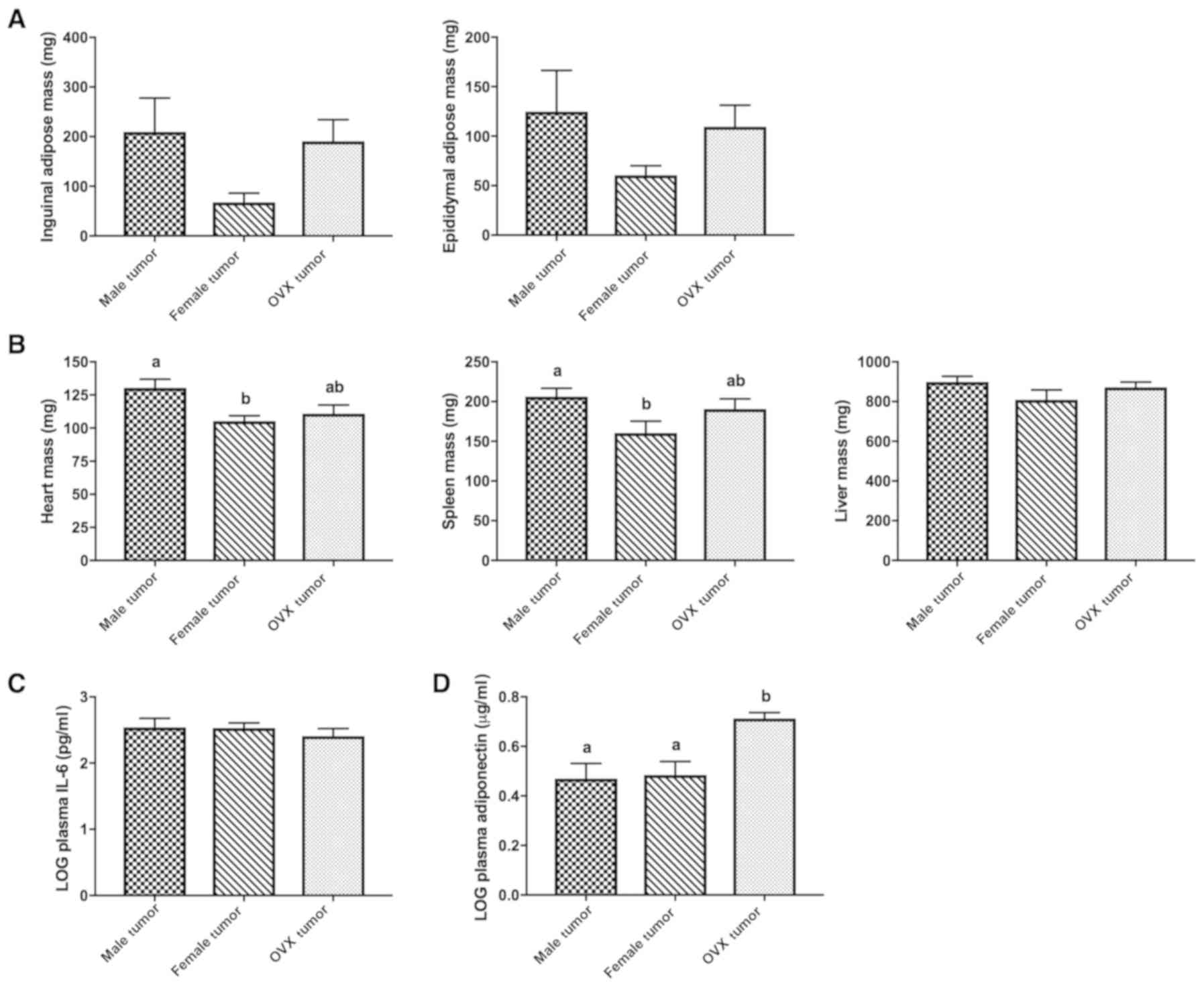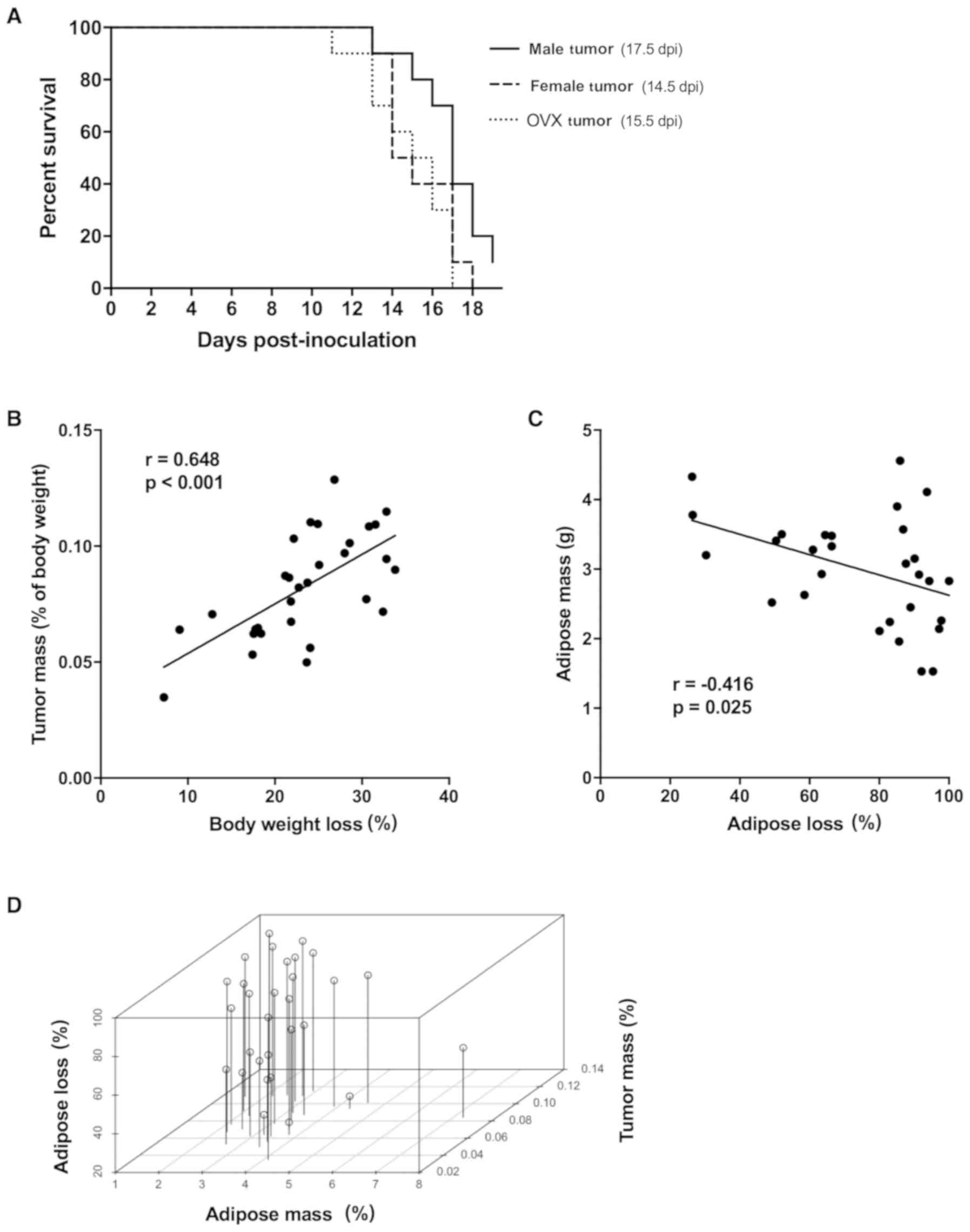|
1
|
Fearon K, Strasser F, Anker SD, Bosaeus I,
Bruera E, Fainsinger RL, Jatoi A, Loprinzi C, MacDonald N,
Mantovani G, et al: Definition and classification of cancer
cachexia: An international consensus. Lancet Oncol. 12:489–495.
2011. View Article : Google Scholar : PubMed/NCBI
|
|
2
|
Tisdale MJ: Cachexia in cancer patients.
Nat Rev Cancer. 2:862–871. 2002. View
Article : Google Scholar : PubMed/NCBI
|
|
3
|
Fouladiun M, Korner U, Bosaeus I, Danaeryd
P, Hyltander A and Lundholm KG: Body composition and time course
changes in regional distribution of fat and lean tissue in
unselected cancer patients on palliative care - correlations with
food intake, metabolism, exercise capacity, and hormones. Cancer.
103:2189–2198. 2005. View Article : Google Scholar : PubMed/NCBI
|
|
4
|
Dahlman I, Mejhert N, Linder K, Agustsson
T, Mutch DM, Kulyte A, Isaksson B, Permert J, Petrovic N,
Nedergaard J, et al: Adipose tissue pathways involved in weight
loss of cancer cachexia. Br J Cancer. 102:1541–1548. 2010.
View Article : Google Scholar : PubMed/NCBI
|
|
5
|
Di Sebastiano KM, Yang L, Zbuk K, Wong RK,
Chow T, Koff D, Moran GR and Mourtzakis M: Accelerated muscle and
adipose tissue loss may predict survival in pancreatic cancer
patients: The relationship with diabetes and anaemia. Br J Nutr.
109:302–312. 2013. View Article : Google Scholar : PubMed/NCBI
|
|
6
|
Ebadi M and Mazurak VC: Evidence and
mechanisms of fat depletion in cancer. Nutrients. 6:5280–5297.
2014. View Article : Google Scholar : PubMed/NCBI
|
|
7
|
Agustsson T, Ryden M, Hoffstedt J, van
Harmelen V, Dicker A, Laurencikiene J, Isaksson B, Permert J and
Arner P: Mechanism of increased lipolysis in cancer cachexia.
Cancer Res. 67:5531–5537. 2007. View Article : Google Scholar : PubMed/NCBI
|
|
8
|
Kalantar-Zadeh K, Horwich TB, Oreopoulous
A, Kovesdy CP, Younessi H, Anker SD and Morley JE: Risk factor
paradox in wasting diseases. Curr Opin Clin Nutr Metab Care.
10:433–442. 2007. View Article : Google Scholar : PubMed/NCBI
|
|
9
|
Martin L, Birdsell L, Macdonald N, Reiman
T, Clandinin MT, McCargar LJ, Murphy R, Ghosh S, Sawyer MB and
Baracos VE: Cancer cachexia in the age of obesity: Skeletal muscle
depletion is a powerful prognostic factor, independent of body mass
index. J Clin Oncol. 31:1539–1547. 2013. View Article : Google Scholar : PubMed/NCBI
|
|
10
|
Nakamura N, Hara T, Shibata Y, Matsumoto
T, Nakamura H, Ninomiya S, Kito Y, Kitagawa J, Kanemura N and Goto
N: Sarcopenia is an independent prognostic factor in male patients
with diffuse large B-cell lymphoma. Ann Hematol. 94:2043–2053.
2015. View Article : Google Scholar : PubMed/NCBI
|
|
11
|
Kim EY, Kim YS, Park I, Ahn HK, Cho EK and
Jeong YM: Prognostic significance of CT-determined sarcopenia in
patients with small-cell lung cancer. J Thorac Oncol. 10:1795–1799.
2015. View Article : Google Scholar : PubMed/NCBI
|
|
12
|
Wallengren O, Iresjo BM, Lundholm K and
Bosaeus I: Loss of muscle mass in the end of life in patients with
advanced cancer. Support Care Cancer. 23:79–86. 2015. View Article : Google Scholar : PubMed/NCBI
|
|
13
|
Masel EK, Berghoff AS, Fureder LM,
Heicappell P, Schlieter F, Widhalm G, Gatterbauer B, Dieckmann U,
Birner P, Bartsch R, et al: Decreased body mass index is associated
with impaired survival in lung cancer patients with brain
metastases: A retrospective analysis of 624 patients. Eur J Cancer
Care (Engl). 26:62017. View Article : Google Scholar
|
|
14
|
Karastergiou K, Smith SR, Greenberg AS and
Fried SK: Sex differences in human adipose tissues - the biology of
pear shape. Biol Sex Differ. 3:132012. View Article : Google Scholar : PubMed/NCBI
|
|
15
|
Carr MC: The emergence of the metabolic
syndrome with menopause. J Clin Endocrinol Metab. 88:2404–2411.
2003. View Article : Google Scholar : PubMed/NCBI
|
|
16
|
Aulino P, Perardi E, Cardillo VM, Rizzuto
E, Perniconi B, Ramina C, Padula F, Spugnini EP, Baldi A, Faiola F,
et al: Molecular, cellular and physiological characterization of
the cancer cachexia-inducing C26 colon carcinoma in mouse. BMC
Cancer. 10:3632010. View Article : Google Scholar : PubMed/NCBI
|
|
17
|
Strassmann G, Fong M, Kenney JS and Jacob
CO: Evidence for the involvement of interleukin 6 in experimental
cancer cachexia. J Clin Invest. 89:1681–1684. 1992. View Article : Google Scholar : PubMed/NCBI
|
|
18
|
Tisdale MJ: Mechanisms of cancer cachexia.
Physiol Rev. 89:381–410. 2009. View Article : Google Scholar : PubMed/NCBI
|
|
19
|
Murphy KT, Chee A, Trieu J, Naim T and
Lynch GS: Importance of functional and metabolic impairments in the
characterization of the C-26 murine model of cancer cachexia. Dis
Model Mech. 5:533–545. 2012. View Article : Google Scholar : PubMed/NCBI
|
|
20
|
Tian M, Asp ML, Nishijima Y and Belury MA:
Evidence for cardiac atrophic remodeling in cancer-induced cachexia
in mice. Int J Oncol. 39:1321–1326. 2011.PubMed/NCBI
|
|
21
|
Johns N, Stephens NA and Fearon KC: Muscle
wasting in cancer. Int J Biochem Cell Biol. 45:2215–2229. 2013.
View Article : Google Scholar : PubMed/NCBI
|
|
22
|
Kliewer KL, Ke JY, Tian M, Cole RM,
Andridge RR and Belury MA: Adipose tissue lipolysis and energy
metabolism in early cancer cachexia in mice. Cancer Biol Ther.
16:886–897. 2015. View Article : Google Scholar : PubMed/NCBI
|
|
23
|
Livak KJ and Schmittgen TD: Analysis of
relative gene expression data using real-time quantitative PCR and
the 2(-Delta Delta C(T)) method. Methods. 25:402–408. 2001.
View Article : Google Scholar : PubMed/NCBI
|
|
24
|
Silva KA, Dong J, Dong Y, Dong Y, Schor N,
Tweardy DJ, Zhang L and Mitch WE: Inhibition of Stat3 activation
suppresses caspase-3 and the ubiquitin-proteasome system, leading
to preservation of muscle mass in cancer cachexia. J Biol Chem.
290:11177–11187. 2015. View Article : Google Scholar : PubMed/NCBI
|
|
25
|
Zhou X, Wang JL, Lu J, Song Y, Kwak KS,
Jiao Q, Rosenfeld R, Chen Q, Boone T, Simonet WS, et al: Reversal
of cancer cachexia and muscle wasting by ActRIIB antagonism leads
to prolonged survival. Cell. 142:531–543. 2010. View Article : Google Scholar : PubMed/NCBI
|
|
26
|
Asp ML, Tian M, Kliewer KL and Belury MA:
Rosiglitazone delayed weight loss and anorexia while attenuating
adipose depletion in mice with cancer cachexia. Cancer Biol Ther.
12:957–965. 2011. View Article : Google Scholar : PubMed/NCBI
|
|
27
|
Talbert EE, Metzger GA, He WA and
Guttridge DC: Modeling human cancer cachexia in colon 26
tumor-bearing adult mice. J Cachexia Sarcopenia Muscle. 5:321–328.
2014. View Article : Google Scholar : PubMed/NCBI
|
|
28
|
Brochu-Gaudreau K, Rehfeldt C, Blouin R,
Bordignon V, Murphy BD and Palin MF: Adiponectin action from head
to toe. Endocrine. 37:11–32. 2010. View Article : Google Scholar : PubMed/NCBI
|
|
29
|
Hetzler KL, Hardee JP, LaVoie HA, Murphy
EA and Carson JA: Ovarian function's role during cancer cachexia
progression in the female mouse. Am J Physiol Endocrinol Metab.
312:E447–E459. 2017. View Article : Google Scholar : PubMed/NCBI
|
|
30
|
Palomares MR, Sayre JW, Shekar KC,
Lillington LM and Chelebowski RT: Gender influence on weight-loss
pattern and survival of nonsmall cell lung carcinoma patients.
Cancer. 78:2119–2126. 1996. View Article : Google Scholar : PubMed/NCBI
|
|
31
|
Kimura M, Naito T, Kenmotsu H, Taira T,
Wakuda K, Oyakawa T, Hisamatsu Y, Tokito T, Imai H, Akamatsu H, et
al: Prognostic impact of cancer cachexia in patients with advanced
non-small cell lung cancer. Support Care Cancer. 23:1699–1708.
2015. View Article : Google Scholar : PubMed/NCBI
|
|
32
|
Stephens NA, Gray C, MacDonald AJ, Tan BH,
Gallagher IJ, Skipworth RJ, Ross JA, Fearon KC and Greig CA: Sexual
dimorphism modulates the impact of cancer cachexia on lower limb
muscle mass and function. Clin Nutr. 31:499–505. 2012. View Article : Google Scholar : PubMed/NCBI
|
|
33
|
Cosper PF and Leinwand LA: Cancer causes
cardiac atrophy and autophagy in a sexually dimorphic manner.
Cancer Res. 71:1710–1720. 2011. View Article : Google Scholar : PubMed/NCBI
|
|
34
|
Hetzler KL, Hardee JP, Puppa MJ, Narsale
AA, Sato S, Davis JM and Carson JA: Sex differences in the
relationship of IL-6 signaling to cancer cachexia progression.
Biochim Biophys Acta. 1852:816–825. 2015. View Article : Google Scholar : PubMed/NCBI
|
|
35
|
McGuire WL, Horwitz KB, Chamness GC and
Zava DT: A physiological role for estrogen and progesterone in
breast cancer. J Steroid Biochem. 7:875–882. 1976. View Article : Google Scholar : PubMed/NCBI
|
|
36
|
Richmond A and Su Y: Mouse xenograft
models vs GEM models for human cancer therapeutics. Dis Model Mech.
1:78–82. 2008. View Article : Google Scholar : PubMed/NCBI
|


















